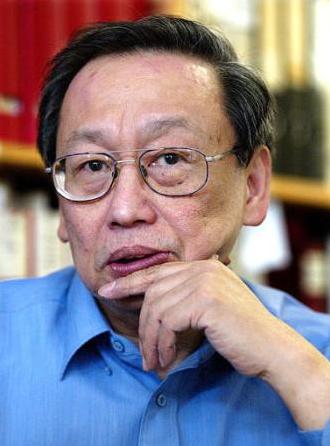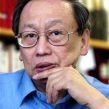
Communist Insurgency Ramps Up as Manila Reaches Settlement with Muslim Militants
Publication: Terrorism Monitor Volume: 10 Issue: 11
By:

The government of the Philippines recorded two key political and military successes in Mindanao in the first half of 2012. First, the Armed Forces of the Philippines (AFP) eliminated Abu Sayyaf leader Gumbahali Jumdail, the Malaysian and Singaporean Jemaah Islamiyah militants Zulkifli bin Hir (a.k.a. Marwan) and Abdullah Ali (a.k.a. Muawiyah) and 12 Abu Sayyaf fighters in a February 3 airstrike in Sulu Province. Second, the government agreed to the “10 Decision Points on Principles” with the Moro Islamic Liberation Front (MILF) on April 24, which envisions a new “substate” for Mindanao’s ethnic Moro Muslims that will replace the current Autonomous Region of Muslim Mindanao (ARMM) and has been lauded as a “breakthrough” by MILF leader Murad Ibrahim (Mindanews [General Santos City], May 13). The government and military have been focused on the MILF, Abu Sayyaf and Mindanao’s other insurgent movement, the Moro National Liberation Front (MNLF), which rebuffed Murad Ibrahim’s pleas to sign the “10 Decision Points.” However, the Communist Party of the Philippines’ military wing, known as the New People’s Army (NPA), has been intensifying its attacks.
The Commander of the Armed Forces Northern Luzon Command blamed “complacency” as the culprit after 30 to 50 NPA fighters carried out an April 25 surprise attack that killed 11 AFP soldiers and two civilians in Ifugao, Luzon Province as the soldiers were returning from a command turnover ceremony (Inquirer [Manila], April 30). This attack represents the highest number of single-day AFP casualties suffered since an October 2011 joint ambush by the MILF and Abu Sayyaf in Basilan that killed 18 Special Forces troops. The attack is also notable because most other NPA attacks have been carried out near the NPA’s epicenter of operations in the Davao Region of Mindanao and rarely in Luzon in the north of the country (Inquirer [Davao], October 9, 2011).
Although the NPA’s current total of 4,000 to 5,000 fighters is some 20,000 fewer than at its height during the Marcos dictatorship in the 1970s, the NPA claims to be fighting on 42 fronts in 2012, up from 32 fronts in 2009, and in 2011 it was responsible for the deaths of 187 government personnel (MindaNews, March 29). NPA attacks are often carried out against AFP Peace and Development Teams (PDTs) which are engaged in non-combat missions as part of the AFP’s Bayanihan counter-insurgency plan, which seeks to build up infrastructure, including roads, wells, medical facilities and schools in remote areas to win the trust of the villagers and pull them away from the influence of rebel groups such as the NPA and Abu Sayyaf.
Recent NPA attacks highlight the expanding geographical breadth of the insurgency:
- On May 24, one fighter in a group of four from the NPA’s Front Committee 4-B assassinated an intelligence officer while he was searching for a fugitive at a cockfighting pit in Lagonglong, Misamis Oriental, Mindanao (ABS-CBN News [Manila], May 25).
- On May 20, the NPA attacked an airport construction site in Albay and damaged equipment (Philstar [Manila], May 20).
- On May 14, an AFP soldier was killed in a morning shootout with NPA fighters in Barangay Bucalan in Canlaon City, Negros Oriental, Central Visayas (Visayan Daily Star, March 14);
- On April 29, four soldiers and a civilian belonging to a PDT were killed in an attack by the NPA in Labo town, Camarines Norte, Luzon. The NPA fighters stole six M-16 rifles, a K-3 sub-machine gun and a pistol from the slain soldiers before escaping (Philstar [Manila], April 30).
- On April 23, the NPA raided a security agency in Butuan City, Mindanao and stole high-powered firearms, including AK-47 and M-14 rifles, automatic shotguns and pistols. The rebels posed as National Bureau of Investigation (NBI) agents and presented search warrants to the guards on duty (Pia.gov.ph [Cagayan de Oro], May 7).
- On April 9, 50 NPA fighters captured a policeman as a “prisoner of war” when they stormed a local police station in Tibao, Zamboanga del Sur, Mindanao and stole weapons. However, on May 16, Jorge Madlos (a.k.a. Comrade Oris), the commander and spokesman of the NPA and a fighter since the NPA’s founding in 1969, announced that “there were no formal charges filed against [the policeman] before the court of the people’s democratic government. Therefore there was no material basis anymore for his detention, thus he was released” (Philstar [Davao], May 6).
The NPA continues to attempt to make itself relevant in a world where Communist revolution has been discredited by focusing on contemporary concerns affecting “the masses,” such as the environment and indigenous rights in addition to its traditional Marxist calls for land reform. On October 3, 2011, for example, the NPA shocked the Philippine government and foreign investors when 200 fighters launched simultaneous attacks on three mining companies in the NPA stronghold of Surigao del Norte in Northeast Mindanao that are among the country’s leading exporters of nickel ore to Japan, China and Australia. The fighters destroyed roughly $11.5 million worth of equipment and facilities and briefly took employees hostage. In an official statement, the NPA said that the mining company has “ruined both fresh water and marine sources, devastated mountains, violated the rights of the Lumad [indigenous] people, and displaced the livelihood of peasants.” [1] However, the AFP countered that the mining companies’ refusal to pay “revolutionary tax” to the NPA is what actually motivated the attacks (Interaksyon.com [Manila], October 4, 2011).
The Netherlands-based Communist Party of the Philippines founder, Jose Maria Sison (a.k.a. Joma), has also spoken out about China’s maritime claims in the South China Sea and the U.S. military presence in the Philippines, which are of concern to Filipinos across political and class lines and resonate strongly among the peasant fisherman and farmers who are most affected by these two issues. Sison condemns China’s ”imperialistic activity” and “baseless claims” in the “West Philippines Sea” and demands an end to the joint Balikatan military exercises between the Philippines and the United States, saying that they are “reinforcing [U.S.] imperialism” in the Asia-Pacific region (Business Mirror [Makati City], April 24).
The Philippines is waging three distinct counterinsurgency operations in Mindanao simultaneously: one against the Moro Muslim armies of the MILF and the MNLF which view the government as invaders and colonizers; a second against the quasi-jihadi and quasi-criminal Abu Sayyaf which views the government as infidels; and a third against the NPA, which views the government as imperialists and exploiters. The NPA’s resurgence adds another layer of complexity to the Philippines’ security situation at a time when the country would otherwise have reason to be optimistic about the prospects for stability and unity given the progress in negotiations with the MILF and the elimination of Abu Sayyaf’s leadership.
Jacob Zenn is a legal advisor and international affairs analyst based in Washington, D.C. He specializes in the analysis of insurgent groups in Southeast Asia, South America, Nigeria, and Central Asia.
Note:
1. See “CPP congratulates NPA in Northeast Mindanao for punishing big foreign mining company,” Communist Party of the Philippines, October 4, 2011, https://www.philippinerevolution.net/statements/cpp-congratulates-npa-in-northeast-mindanao-for-punishing-big-foreign-mining-company





